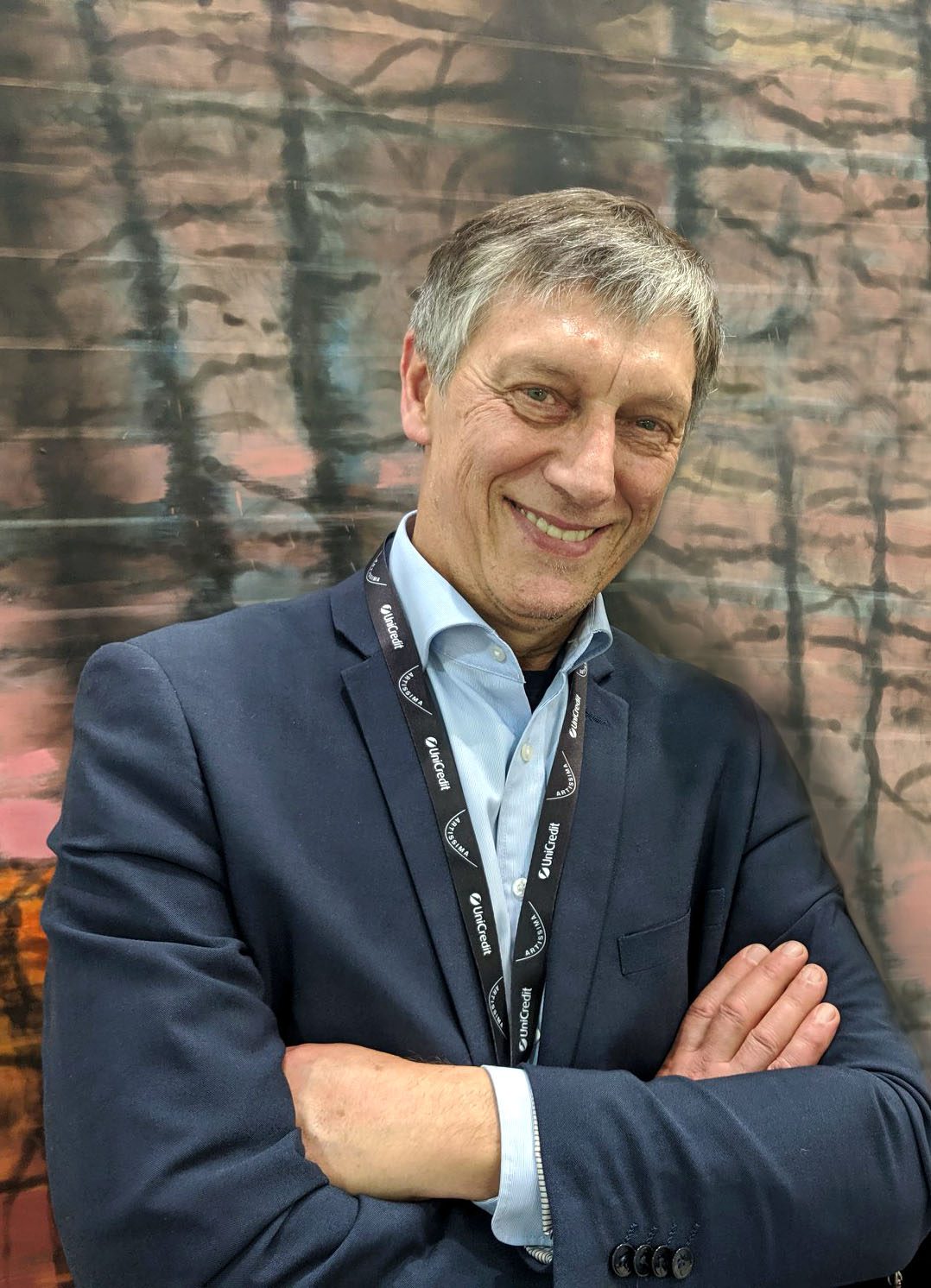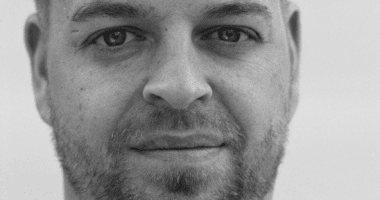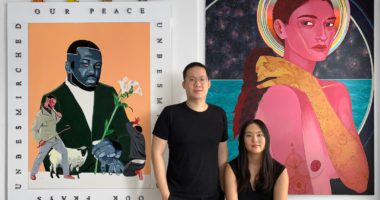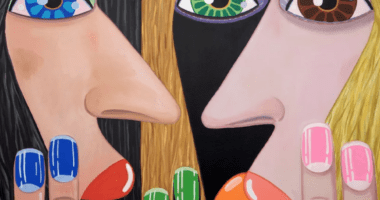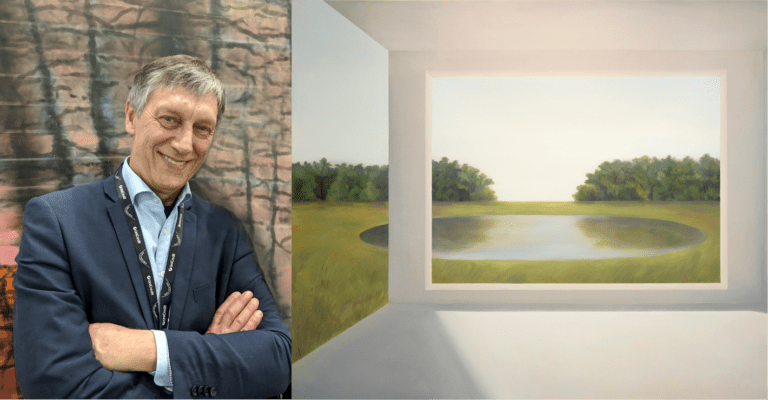
Arvydas Žalpys. Director of Meno Parkas Gallery. Image courtesy of Meno Parkas Gallery.Gabriele Alekse, Mirror, 2022. Image courtesy of the artist and Meno Parkas Gallery
Founded in Kaunas, Lithuania in 1997, Meno Parkas Gallery was established by the Lithuanian Artists Association at an uncertain time for its country. Seven years earlier, Lithuania had declared independence from the Soviet Union, which presented a mix of hurdles and opportunities for the nascent gallery and its director, Arvydas Žalpys.
“It wasn’t easy since Lithuanian art wasn’t widely known after the restoration of independence,” Žalpys recalled of the period. “On the other hand, it was an era when there was noticeable interest in Lithuanian art, and we just had to do our best to use that moment as our gateway to the West. We knew from the very start that without the international arena, we wouldn’t be able to accomplish much; it is not enough to be seen and even be highly recognized on a local scale since the Lithuanian market has always been quite small. We were seeking to reestablish links to European and world culture.”
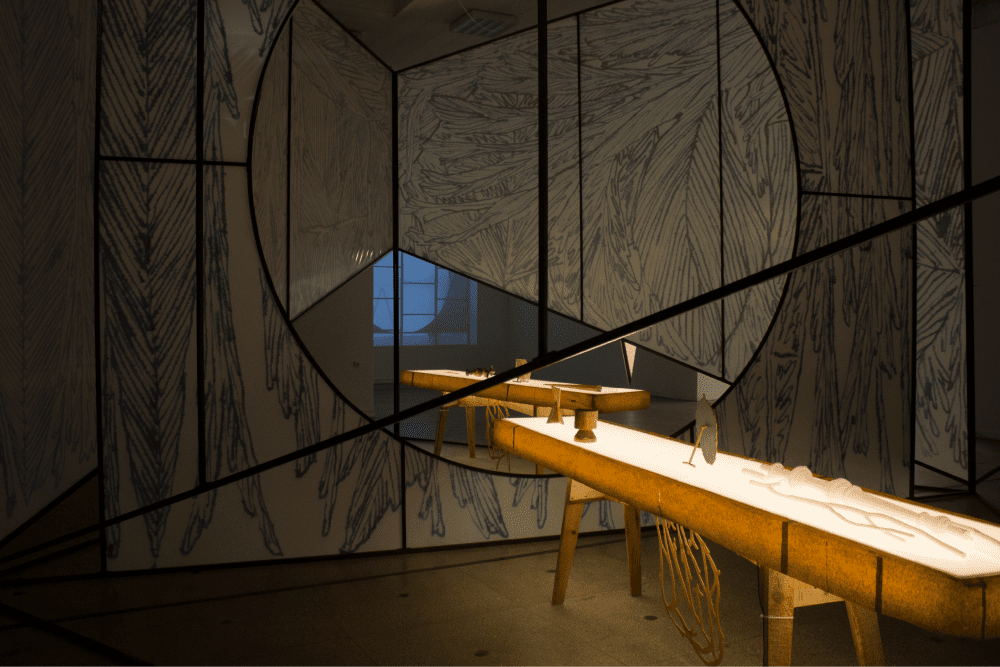
Installation view of Žilvinas Landzbergas, Hidden Sun, 2022. Image courtesy of Meno Parkas Gallery.
In the two decades since, Meno Parkas has dedicated itself to building bridges between Lithuanian artists and the international community. “The gallery’s ambition is to carry out projects of high artistic value, and it is necessary to constantly discover new opportunities, new markets, and expand to foreign countries,” Žalpys said. Its roster includes Lithuanian artists such as Elena Balsiukaitė-Brazdžiūnienė and Agnė Jonkutė, both of whom began their careers by showing with the gallery in the mid-2000s.
In 2017, this ambition took on a digital component when the gallery joined Artsy to further broaden its international reach. Part of the reasoning for the move, explained Žalpys, came from a recognition of the shifting tastes of collectors who were increasingly embracing online channels to engage with galleries and their programs in a global context. Since joining Artsy, Meno Parkas has reached an extensive global network, carving out new audiences for its Lithuanian artists. “Being on Artsy has grown our audience significantly, which I think is very important when you work with such platforms,” Žalpys said.
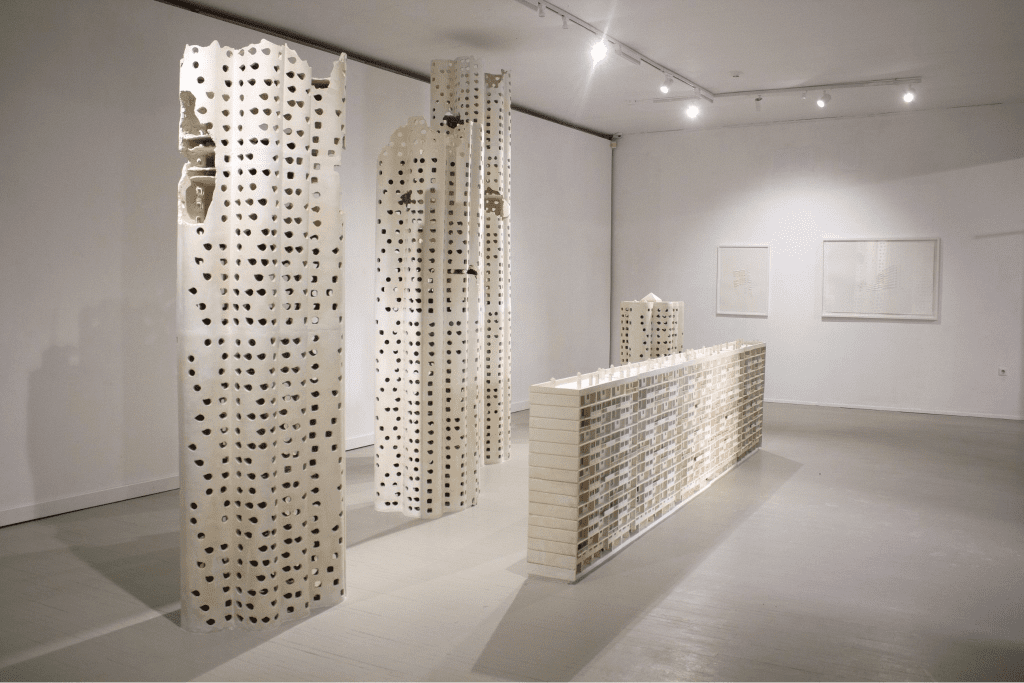
Installation view of Martine Feipel and Jean Bechameil, Mechanics of Tomorrow’s World, 2022. Image courtesy of Meno Parkas Gallery.
On a daily basis, Meno Parkas uses Artsy to represent the vibrancy of its program through digital showcases that attract new and seasoned collectors. By regularly uploading new works, sharing information about upcoming exhibitions, and presenting them via Artsy Viewing Rooms, the gallery also maintains constant visibility. These routine activities have become crucial for maintaining a lively presence on the platform.
“Viewing Rooms can give better visibility and helps introduce new works of the artists in more detail,” noted gallery curator Lina Mikalauskienė. “The consistent presentation of Viewing Rooms helps to reach a variety of collectors, gives more opportunities, and creates awareness for the artists and galleries projects.”
The gallery also uses Artsy’s features, such as the “Buy Now / Make Offer” tool, which streamlines the art acquisition process for collectors who prefer convenience and immediacy. “This creates a seamless experience for collectors, and in this day and age, a lot of people want such transactions to be as easy as possible,” Žalpys noted.
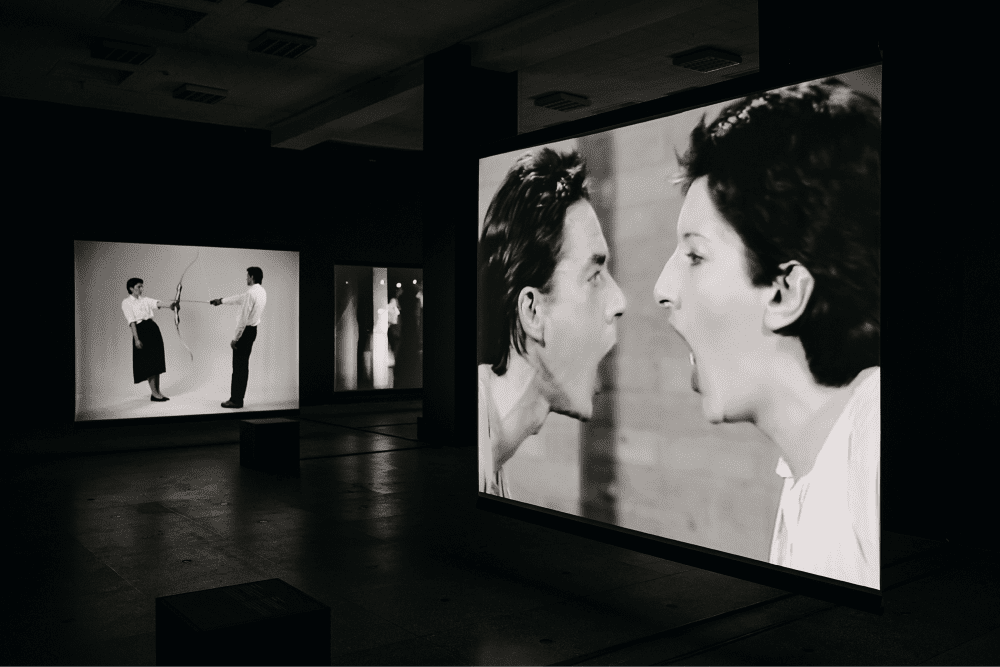
Installation view of Marina Abramović, Memory of Being, 2022. M. K. Čiurlionis National Art Museum, Kaunas Picture Gallery. Organizer Meno Parkas Gallery. Image courtesy of Kaunas 2022 | Martynas Plepys.
The gallery’s impact on Artsy is exemplified by the success of Lithuanian painter Gabriele Alekse, whose appeal to collectors in the U.S. and Asia highlights Meno Parkas’s role in elevating emerging talent to an international stage. Žalpys highlights that Alekse’s work from her most recent dual exhibition with Petras Lincevičius, titled “Pre-verbal Mythos,” nearly sold out via Artsy alone, with collectors mostly from the U.S. and some from East Asia and Europe.
Žalpys also illuminated the gallery’s increased ability to cultivate relationships with a broad range of collectors and institutions. This includes those interested in the Lithuanian diaspora, key historical figures in Lithuanian art, and collectors who discover the gallery through its more emerging artists. A key plank of building these relationships, he notes, is Artsy’s conversations tool, which helps the gallery tailor offerings to collectors’ preferences.
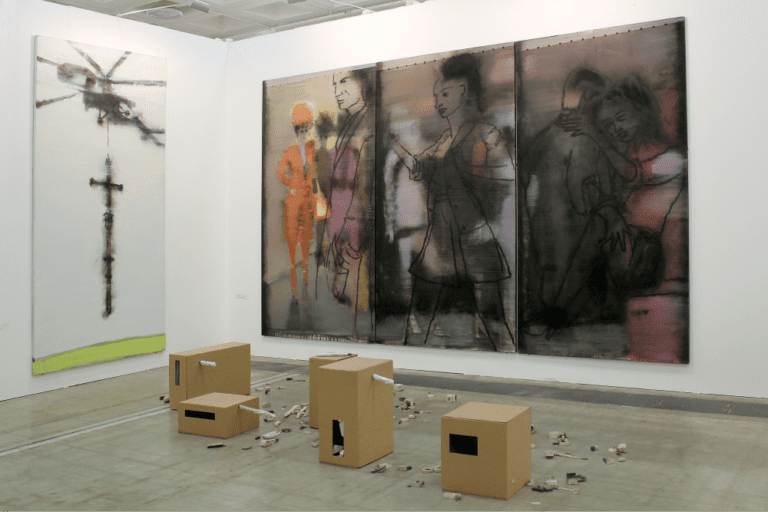
Installation view of Meno Parkas Gallery at the International Contemporary Art Fair Art'14 in London. Image courtesy of Meno Parkas Gallery.
In one case, Mikalauskienė recalls an experience where the gallery helped a collector interested in Lithuanian diasporic artists discover the works of Kes Zapkus, an artist from Lithuania based in New York. While the artist is well-known and recognized in Lithuania, the online visibility of the Artsy platform helped to bolster his international presence, recalled Mikalauskienė.
“The online visibility helped to reach a number of collectors,” she said. “When we started working with [Zapkus] and planned to present his solo exhibition in our gallery, the first collectors we reached were through the Artsy platform.”
By integrating digital strategies with its traditional ethos of cultural exchange and artistic promotion, Meno Parkas Gallery has bolstered its position as a pivotal conduit for Lithuanian contemporary art. By leveraging the Artsy platform and its tools, its mission continues to resonate across borders: “Visibility is very important for Lithuanian artists, and Artsy gives that possibility to be seen and increase the interest of collectors around the world,” Žalpys said.
